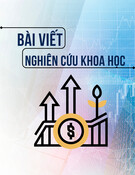
http://www.iaeme.com/IJMET/index.asp 738 editor@iaeme.com
International Journal of Mechanical Engineering and Technology (IJMET)
Volume 10, Issue 03, March 2019, pp. 738-748. Article ID: IJMET_10_03_077
Available online at http://www.iaeme.com/ijmet/issues.asp?JType=IJMET&VType=10&IType=3
ISSN Print: 0976-6340 and ISSN Online: 0976-6359
© IAEME Publication Scopus Indexed
DEVELOPMENT OF THE CONCEPTUAL
FRAMEWORK OF ORGANIZATIONAL
SUPPORT AND SELF-SUPPORT FOR
INNOVATION CAPABILITY IN THE THAI
AUTOMOTIVE INDUSTRY
Poramet Eamurai
Graduate School of Business Administration, Southeast Asia University, Thailand
Napaporn Khantanapha
Graduate School of Business Administration, Southeast Asia University, Thailand
Rapeepun Piriyakul
Faculty of Science, Ramkhamhaeng University, Thailand
ABSTRACT
The objective of this research was to develop a conceptual framework of
organizational support and self-support for innovation capability of employees in the
Thai automotive industry. The study by reviewing related literature and theories and
holding a small group meeting with experts in the automotive industry to review the
conceptual framework obtained from this study. This research is only part of the main
research that we are currently studying. The results from this research have led to the
conceptual framework and can identify the independent factors, which include (1)
organizational support that consists of the second-order factors, i.e. knowledge from a
closed system and knowledge from an open system, and (2) self-support that consists
of the second-order factors, i.e. knowledge from self-practice and knowledge from
self-search, as well as can identify the mediator, which includes one factor, i.e.
knowledge absorption, and the dependent factor, i.e. innovation capability. The results
obtained from this research will be used to study the population in order to collect
data and extend results of the next research.
Cite this Article: Poramet Eamurai, Napaporn Khantanapha and Rapeepun Piriyakul,
Development of The Conceptual Framework of Organizational Support and Self-
Support for Innovation Capability in The Thai Automotive Industry, International
Journal of Mechanical Engineering and Technology, 10(3), 2019, pp. 738-748.
http://www.iaeme.com/IJMET/issues.asp?JType=IJMET&VType=10&IType=3

Poramet Eamurai, Napaporn Khantanapha and Rapeepun Piriyakul
http://www.iaeme.com/IJMET/index.asp 739 editor@iaeme.com
1. BACKGROUND AND SIGNIFICANCE OF THE STUDY
The innovation of an organization is part of the success and performance of such organization.
With a rapid change in technology and innovation,if any organization is unable to develop and
change themselves by developing their innovation capability continuously, it will be difficult
to succeed in the long term. Driving innovationmust rely on knowledge, ability, creativity,
and supportive resources, both tangible and intangible, such as technology
and communication. Human capital development in all dimensions will be able to help drive
the organization to become an innovation-oriented organization. The importance of
innovation capability in terms of human capital is that employees have obtained knowledge,
experience, and leaning that can be used to improve and develop their talents and skills
leading to outstanding uniqueness and innovation.A fact that employees can develop their
own innovation capability is not only dependent on creating learning activities for them, but it
also relies on observing the different capabilities of each employee. These different
capabilities of employees can be used to create the organization’s capability, which is the
beginning of innovation for the organization. Again, it can be said that the innovation of an
organization is part of the success and performance of such organization because the
innovation requires knowledgebase within the employees, which will be used to create
innovation called as innovation capability of employees. Some organizations focus on
developing this innovation capability among employees while some organizations aim to gain
innovation through various ways, such as by doing research, buying or acquiring knowledge
from employees who have learnt through their work called "Best Practices."
Currently, the number of innovations in the industries and businesses in Thailand is much
less than those in other countries. The proportion of investment in research and development
of the Thai manufacturing industry that focuses on developing product innovation is 75%
while those that focuses on developing process innovation is only 25%. The investment in
research and development of the Thai automotive industry in 2016 was ranked in the third
place compared to those of other industries, but it was an investment in product research and
development rather than in process development (National Science, Technology and Innovation
Policy Center, 2017). The Thai manufacturing industry plays an important role in the national
economy development and is a main branch that has driven the economy of the country
(Department of Industrial Promotion, 2015). The Thai automotive industry is considered one
of the main industries supported by the government. In addition, the Thai auto parts
manufacturers are seen as being strongest due to the highest number of business operators, or
around 2,500 operators (Thailand Automotive Institute, 2016). With the current change, the
organizations need to be competitive to survive. At present, the car assembly
companies (OEMs) are looking to find car parts manufacturers with innovation capability in
order to increase efficiency and reduce production costs. Moreover, with the trend of energy
conservation, energy-saving cars and clean technologies have occurred (Department of
Industrial Promotion, 2015). The car assembly companies are therefore required to change
and develop vehicles together with automotive parts manufacturers and suppliers of raw
materials used in car production. They are thus looking for automotive parts manufacturers
with innovation capability and ability to respond to current uncertainties (Antonio & Yam,
2007).
Therefore, the automotive parts manufacturers are affected and required to adapt
themselves to keep up with the rapidly changing technology development because most of
them are small with low capital and use of technology. However, with the largest number,
these companies are therefore an important part of driving the Thai automotive industry
(Damanpou, Walker & Avellaneda, 2009).At the same time, importing automotive parts from
ASEAN countries is a problem that will affect the Thai auto parts manufacturers due to their

Development of The Conceptual Framework of Organizational Support and Self-Support for
Innovation Capability in The Thai Automotive Industry
http://www.iaeme.com/IJMET/index.asp 740 editor@iaeme.com
lower costs and advantage in tax restrictions (Thailand Automotive Institute, 2012). From the
importance of such problem, there is an urgent need for automotive parts manufacturers to
develop the innovation capability of employees in their organization by allowing employees
to receive knowledge from organizational support where the organization is responsible for
providing various sources of knowledge for employees to learn both the knowledge from
closed and open systems in order to absorb and apply knowledge in their organization as well
as from self-support where the employees can acquire knowledge from their work. They have
the opportunity to practice solving the problems in their work so that they achieve learning
and gain experience from repeated trials and errors until it becomes new knowledge and
innovation capability. In addition, they are allowed to search for new knowledge by
themselves outside their organization through the use of various media, such as the Internet,
and from external organizations in order to absorb and apply knowledge in their work.
Moreover, the organization must encourage employees to use creativity and find new ideas on
a regular basis (Van De Vrande et al., 2008). This can lead to the development of innovation
capability in terms of production, which is an important part of driving the organization, by
increasing production efficiency, using low costs with high flexibility, and minimizing waste
from production. Therefore, this research was aimed to develop a conceptual framework that
affects the innovation capability of employees in the Thai automotive industry.
2. RESEARCH OBJECTIVES
To obtain a conceptual framework for the development of innovation capability of employees
in the Thai automotive industry; and
To know the independent factors, mediators, and dependent factors identified in the
conceptual framework
3. LITERATURE REVIEW
Innovation means things that are new or strange from the original, which may be in the form
of new product, service or process, and these new things arise from the use of knowledge and
creativity until creating benefits for the organization, economy, and society (Royal Society,
2009). It also means things that arise from the ability to use knowledge, creativity, skills, and
experience in technology or management to develop a new product, process or service in
order to meet the needs of the market, including technological improvements, product design,
and training used to increase economic value and bring benefits (National Innovation Agency,
2014).
The importance of innovation can help increase the competitiveness of the organization by
inventing a new product, service or process that meets customer needs. In addition,
production innovation can help increase the efficiency of the production process to be flexible
and time-saving as well as reduce unnecessary production steps providing the production with
more volume and higher efficiency and resulting in lower production costs. Moreover, the
innovation can help reduce production errors and create accuracy in the production process so
that products with high quality are accepted by customers or users who are then satisfied and
loyal and profits are generated from higher sales (Rogers, 2003).
In the current era of rapid change, if any organization is unable to develop and change
themselves by developing their innovation capability continuously, it will be difficult to
succeed in the long term. Driving innovation must rely on knowledge, ability, creativity, and
supportive resources, both tangible and intangible, such as technology and communication.
Human capital development in all dimensions will be able to help drive the organization to
become an innovation-oriented organization.

Poramet Eamurai, Napaporn Khantanapha and Rapeepun Piriyakul
http://www.iaeme.com/IJMET/index.asp 741 editor@iaeme.com
The innovation of an organization is part of the success and performance of such
organization. It can be classified into four types based on the purpose of use:(1)Product
innovation is the development and presentation of a new product, such as technology, and the
improvement of an existing product to have better quality and performance (Smith, 2006;
Schilling, 2008); (2) Service innovation is the change of idea into practice, the use of a new
technology to meet the needs and create customer satisfaction, the enhancement of efficiency
and effectiveness of the service, and the creation added value for the business (Makoto,
2012); (3) Process innovation is the application of new knowledge to develop the production
process to be more efficient and flexible by using low costs (Zhou & George, 2001), which
reflects that process innovation is a matter of change in the organization,whether it is a
tool, manufacturing process, distribution or organization management model, that aims to lead
to the development of product innovation to reach the consumers or users with the most
efficiency and effectiveness to the organization (Capon et al., 1992; Ettlit & Reza, 1992;
Gopalakrishnan & Damanpour, 1997); and (4) management innovation is a form of
management that responds to the new era of operations, which may include developing a new
working system or guideline, combining new work practices, and creating a new thing in the
management that is useful and accepted, such as virtual management.
An organization will have innovation if it is based on many important fundamentals. For
example, the organization must encourage knowledgeable workers to search for new ideas on
a regular basis (Vrande et al., 2008) by supporting and providing necessary resources of
knowledge so that employees can learn both the knowledge of the organization and
knowledge from outside sources. In addition, the organization must encourage the creation of
a network between organizations so that employees of different organizations can exchange
and learn between each other (Vanhaverbeke, 2008). The employees must have the
knowledge necessary to develop their innovation capability first through various learning
processes so that they are able to apply the gained knowledge to improve their current work
and develop it as innovation.
Innovation capability in terms of human capital is that employees receive knowledge,
experience, and learning and can improve and develop their abilities and skills leading to
outstanding uniqueness and innovation. Again, a fact that employees can develop their own
innovation capability is not only dependent on creating learning activities for them, but it also
relies on observing the different capabilities of each employee. These different capabilities of
employees can be used to create the organization’s capability, which is the beginning of
innovation for the organization.
3.1. Organization support
Organization support means that employees in an organization are provided opportunity to
gain knowledge from different sources to develop their innovation capability and meet the
goals of their organization. The organization will determine and provide the appropriate
knowledge sources for employees to gain, absorb, and apply knowledge in their organization.
The knowledge sources based on organizational support come from two systems, i.e.
organizational support from a closed system and organizational support from an open system.
3.1.1. Organizational support from a closed system
means allowing employees to gain knowledge from on-the-job and off-the-job trainings and
to apply their knowledge to develop their innovation capability and meet the goals of their
organization (Sallis & Jones, 2002). The employees can integrate knowledge within their
organization by collecting knowledge that has been passed on and exchanged until it becomes
a new knowledge that can be used by employees in the organization to increase their work

Development of The Conceptual Framework of Organizational Support and Self-Support for
Innovation Capability in The Thai Automotive Industry
http://www.iaeme.com/IJMET/index.asp 742 editor@iaeme.com
efficiency (World Bank, 2002). As a result, a new product can be developed due to the
introduction of new knowledge (Seng, 1990). Moreover, there is a knowledge sharing
network created in the organization (Dyer & Nobeoka, 2002) as well as an accumulation of
knowledge in the organization enabling employees to use their knowledge and create new
knowledge (Lin & Lee, 2005).
Organizational support from a closed system is divided into two types. (1) Knowledge
obtained from on-the-job training is the knowledge transmitted within an organization
through different activities. On-the-job training is intended to allow employees to learn
through training in their work and most knowledge is in the persons and is mainly based on
the experience of employees within the organization. Typically, it focuses on the practice so
that employees apply knowledge in their work as well as on enhances the skills needed to
develop the employee's innovation capability, upgrading the working capability in the desired
direction, and increasing the productivity resulting in an achievement of the organization's
goals (Maria & Ramos, 2012); and (2) Knowledge obtained from off-the-job training is the
knowledge supported by the organization where employees are allowed to learn and receive
new knowledge in addition to those obtained from on-the-job training (Bankole, 2000).An
organization may arrange for employees to attend a meeting or seminar on topics relating to
their work and the knowledge from these topics is not disclosed or published (Landy & Conte,
2007).Therefore, the organization will provide an off-the-job training course and support all
expenses to employees in order to provide employees with new knowledge that is in line with
current changes (Olakunle & Ehi, 2008) as well as to apply knowledge in their work and
develop the innovation capability of employees.
Organizational support from an open system means allowing employees to learn from the
shared knowledge sources free of charge from outside their organization and to apply such
knowledge in their organization in various ways, such as by conducting experiments until
being expert in working and becoming a new knowledge that is beneficial to the organization
(Townley, 1993), which creates value for the organization (Sallis & Jones, 2002) in the form
of product innovation or production innovation (Seng, 1990; World Bank, 2002). In addition,
the use of such knowledge can be done in various ways; for example, the knowledge can be
instantly used, the data within the organization must be taken via the cloud system or the
knowledge is processed by free software. Moreover, it can help create knowledge in the
organization (Lin & Lee, 2005). Some organizations may allow disseminating or sharing this
new knowledge to external organizations widely that will be beneficial to various industries
and that will form a knowledge sharing network between organizations leading to cost
reduction, partnership, and collaborative advantage (Martelo & Cegarra, 2014).
3.2. Literature supporting influence line from organizational support to
knowledge absorption
According to the review of literature supporting the influence line from organizational support to
knowledge absorption and application of employees, Wu & Chiang (2006) suggested that the
organizational support by sharing knowledge through on-the-job and off-the-job trainings has
a direct influence on the ability to absorb knowledge. McAdam & Miller (2010) found
that organizational support from work instructors at various levels has a direct impact on
knowledge absorption of employees. If an organization uses different tools and techniques in
the teaching, the employees will be motivated to learn and help increase their ability to absorb
knowledge. Similarly, Nikolas & Wuryaningrat (2013) said that organizational support can
affect the ability to absorb knowledge. There is empirical evidence that new knowledge
arising from employee learning can be transformed into innovation capability if it is supported
by the organization along with higher knowledge absorption. Vasylieva & Anatoliivna (2013)

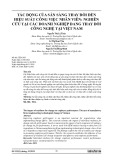
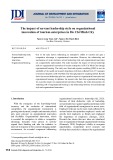
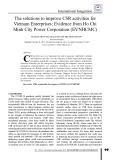
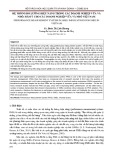
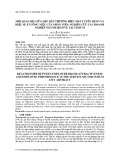

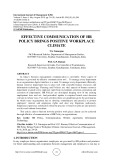

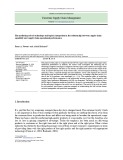

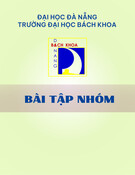
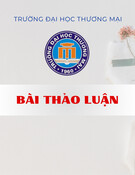
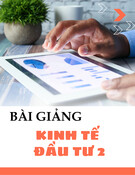
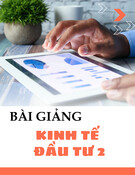
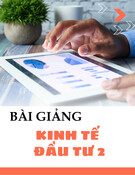
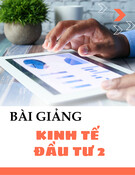
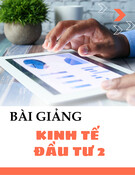
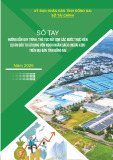
![20 câu hỏi Quản lý dự án phần mềm có đáp án [mới nhất]](https://cdn.tailieu.vn/images/document/thumbnail/2025/20251003/hieu2004haha@gmail.com/135x160/78791759734259.jpg)
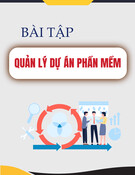

![Tài liệu Quản lý dự án: Kiến thức nền tảng toàn diện [chuẩn SEO]](https://cdn.tailieu.vn/images/document/thumbnail/2025/20250910/kimphuong1001/135x160/92631757496585.jpg)


